
5 Minutes with… Charles Hodges

Charles Hodges is inspired by people who want to change things. He founded Arts & Letters Creative Co. “to be a home where talented people could partner with the world’s biggest dreamers” to create ideas that do just that - change things.
And he’s no stranger to transformative work. Before launching Arts & Letters in 2017, Charles was a group creative director at TBWA\ Media Arts Lab - the dedicated Apple agency - where he led global creative efforts for iPhone. What’s more, he began his career as a copywriter at Wieden+Kennedy New York, working on Nike, ESPN, Heineken and Delta, before departing to work at Google’s Creative Lab.
LBB’s Addison Capper caught up with Charles for a full deep dive on his vision for his agency (with a few examples of work sprinkled throughout).
LBB> Arts & Letters launched in 2017 with Google as its flagship client. Can you tell me how the agency has changed and evolved over that time, and how that evolution fits in with your general vision for the agency back then?
Charles> When we started Arts & Letters, we really thought it would be more of a small creative studio, centred around an open and agile process of making. We knew we wanted to complement the evolving infrastructure of modern clients, ones that had internal creative groups, ones that wanted to work in a more open format, ones that still needed big ideas, but were probably looking to bring them to life in a different way. Since that was the intention before there were any clients at all, we were extremely fortunate to have Google as our foundational client since they work like this already.
As the company has evolved, we have found that almost all of our clients like working this way. I hesitate to say that it’s 'the way things work today' or anything too absolute like that, but it is the way that all of our clients like to work.
We didn’t have an ‘agency’ mindset then and we don’t really have one today. We feel a bit more like we are the strategic, creative and production elements lifted out of a more traditional agency model that allows for a more flexible and impactful format. The result is a creative company that is more liberated to work across a wide range of problems and embrace whatever the best solution is, whether that be something in the more traditional communications space, something at a more consultative level of strategic depth or even something in the product or experience realm that can help be a solution for any problem our clients may face.
The core belief that underpins all of this – that great ideas change things – is not one that is unique to us (or even the advertising industry), but is a human truth about the transformational power of concepts. It’s the lightning in a bottle that we never stop trying to capture and we’ve spent a lot of time trying to allow the process to naturally evolve alongside that belief and not hold too tight to any single notion or way of working.
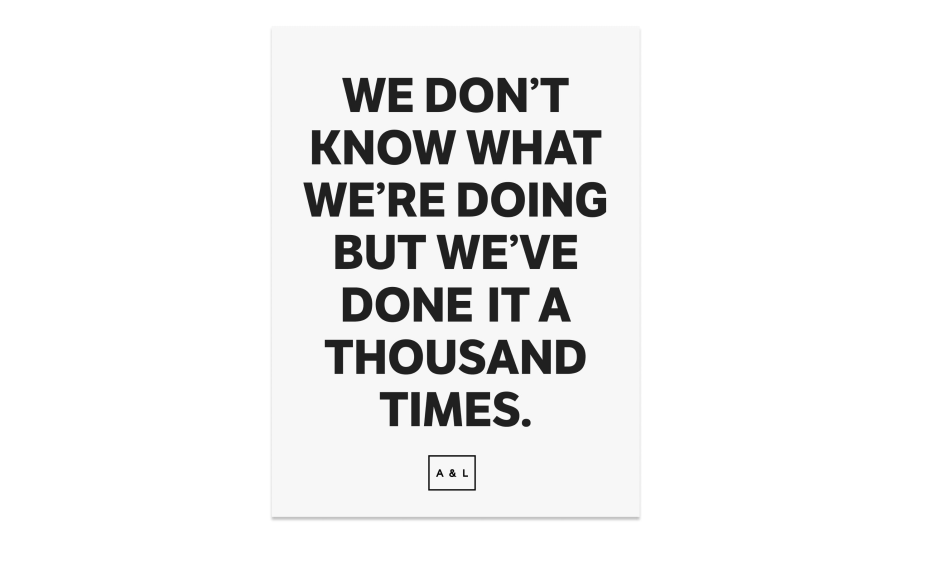
LBB> You've just made four pretty senior hires across creative, operations and communications. What is driving these and what do they mean for the direction in which Arts & Letters is going?
Charles> The addition of Zoe Bell and Derek Barnes as creative directors, Christie Allport as the director of communications and Theo Abel as the director of operations all signal one thing: we are growing up, but doing it in a way that stays true to the roots of what has helped build the place from the beginning and have the values of the place - care, optimism, openness, speed and independence – at the centre of who they are.
These hires are also a signal of something else we’ve realised: great leaders at Arts & Letters are great teachers, but also lifelong learners. And they also never let go of the instinct to make things that can help other people make things.
Everyone at Arts & Letters – EVERYONE – makes things. It might be a drawing of how a new process might take shape, a quick piece of writing that helps set the tone for a new direction, a curated playlist that plays before a company-wide meeting or even a high-concept menu of drinks for a creative department happy hour (Tears of Charles was one that someone came up with – no one ordered it).
There’s that notion that form follows function and I think we believe that process follows people. From the beginning, we’ve had this great opportunity to build a place built around people, rather than try to make people fit into the way any place is traditionally supposed to work.
This idea of creating an environment that helps bring out the best in things (a team, an opportunity, a new partnership) and doing it in a supportive way is a tie that binds all of these new hires (and maybe anyone we’ve ever hired). Still, this is a new moment and all four of these people represent a next-level of creative instinct, leadership in service of others and all-out care that has already had a huge impact across the company.
LBB> So many businesses are trying to figure out the long term outlook for hybrid work / office life at the moment. You've actively announced your new ‘Work Together Anywhere’ model - can you speak a bit further about the model and why it's the right strategy for Arts & Letters?
Charles> While we recently announced Work Together Anywhere as our new operating model, it’s really just a codification of what we’ve been doing from the beginning, even though it kind of took the pandemic to help us realise it (and also allowed us to experiment even further with how it might work).
From the beginning, we worked with almost all of our clients in a remote setting, worked with an extended network of talent in a tech-empowered way and have evolved our suite of tools to be something that is built for both individual focus and agile team collaboration. All of that being said, those are really just tools the various boats of people use to navigate their work. The culture that surrounds it is the water that helps people move and that’s what Work Together Anywhere is about. What can that water feel like? How can it be easier to navigate, no matter where the winds blow?
Some people have said that it is a remote-first policy, but that’s not how we really think about it. To us, it’s more about an evolving-hybrid environment that brings the best of a remote-first style of working and layers in the various rhythms – formal and informal – of being together. In a business of collaboration, everything is about this notion of ‘togetherness’. It’s all about the feeling of connection. This can (and has) happened with people that have never met in person. Similarly, you can show up every day at work and sit next to someone and not feel connected.
It’s all about the water, the space between, what’s it charged with?
Work Together Anywhere is about building a work-flow that is remote first (so that is always an option) and then empowering people to make the best decision for what they think they need to get things done as things unfold. The underlying (and important tenet) of Work Together Anywhere is also something that has been in the DNA of A&L from the very beginning: empowerment. We really believe that people are smart and are really trying to do their best.
A year into the pandemic, we started to say “We’re not going back to work. We’re starting over.” This notion of beginning again is very natural to the creative industry. You just have to create an environment where it can flourish. For us, we also see it as something that fuels the core of what our business believes in: that the right team can do anything. The never-ending operational truth of the business of creativity is that everything is about the right team. Therefore, we see being geography-first as a limitation. To flip the oft-use tech saying, it’s a bug, not a feature. If the pandemic has taught us anything it’s that the right team doesn’t have to be in the same room to be on the same page, so we see it as a moment to continue to build a connected network of talent during a once-in-a-business’s lifetime.
All of these hypotheses require us to rethink many things (and to bake in certain assumptions from the very beginning). A culture of hybrid empowerment also means evolving a culture of responsibility and accountability. It also poses exciting questions about the role of management, one we see feeling more like coaching than anything else. And, perhaps most important of all, it's an invitation to rethink all of the rhythms of what it means to be physically together.
What are those tent-pole moments of formality? What are those naturally occurring moments of informality? How can they be more than just another meeting? We all know the world needs less of those.
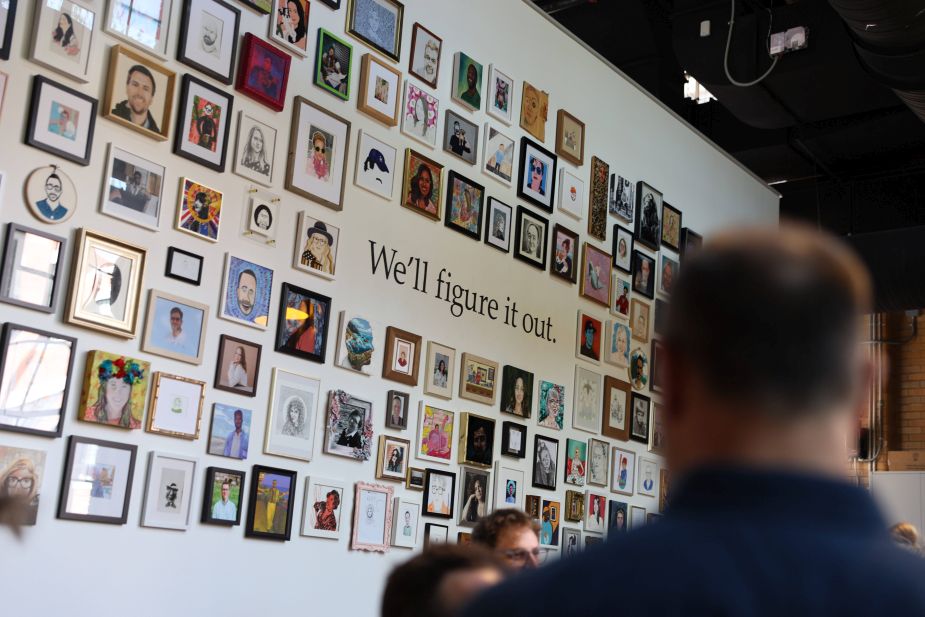
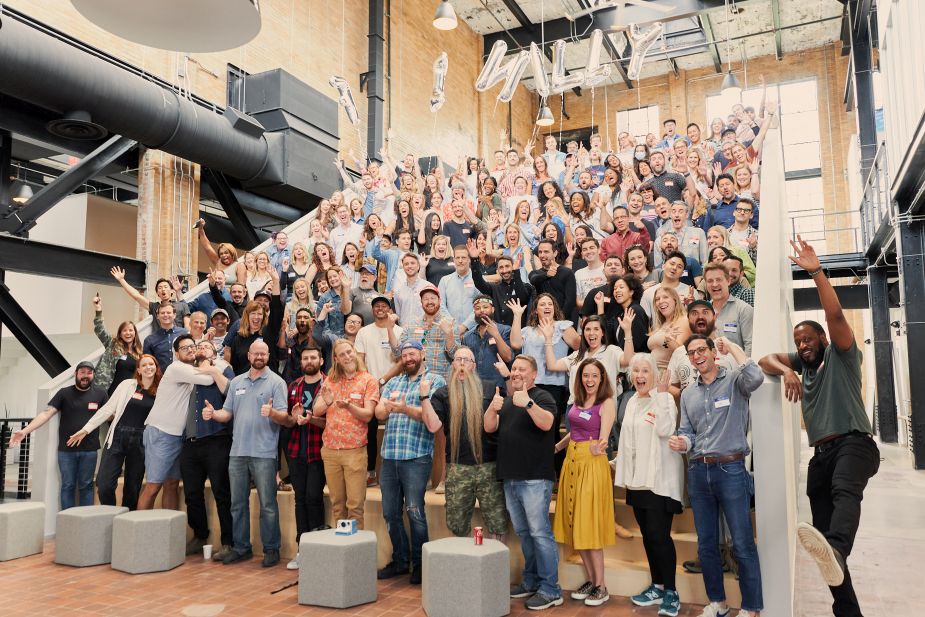
LBB> In practice, how does the model work? How are you equipping employees and managers with the right tools to ensure success? And what does it mean for the agency's physical office?
Charles> These are great questions, ones that we will likely never stop answering. First, on the notion of tools, from the very beginning our entire tech-stack has been able to be something that allows for remote collaboration. This was evident in the beginning of the pandemic when we were able to make the shift in almost two days. Also, because we’re relatively young as a company, we’ve been able to create (and dissolve) rhythms based on the instinct of what the moment needs. Tools are always evolving as well based on specific needs, so we’ve found it best to listen to what people need and then figure out how far and wide various rollouts need to be. There’s a tendency for companies to want ‘one thing to solve all the things’ and it just doesn’t work like that. There’s always something new out there, so you have to be very wary of tool sprawl and creating extra things that just create extra things.
I’m often reminded of this story of how NASA spent millions of dollars inventing a space pen, only to find out that the best tool was a pencil. No matter how much things change, the business of ideas usually still moves forward with an idea that can be written on a piece of paper with a marker, typed in a word doc in a massive font or jotted in the margin of a notebook when you’re thinking about what to make for dinner. There is no tool that can capture the magic of inventiveness better than any other.
People are different. They need different things. And more often than not they just need things to get out of the way.
So we’re always building around a baseline notion of ‘just enough’ and then allowing people to build their own workflow from there, layering in and advocating for the things they need to reach their potential. It’s more of a Pixar approach than a traditional agency one. Similar to Pixar, we are building a place around talent and that means a lot to your second question from a brick-and-mortar standpoint. Because we’re building a connected network of talent that work together anywhere, we’ve naturally evolved (for now) a hub and spoke model with a portion (majority for now) of our talent in Richmond, Virginia where we’re headquartered, but with growing talent centres in many other cities like New York, Los Angeles, San Francisco, Portland, Austin and Nashville.
As the place evolves, we’ll naturally, again, let ‘process follow people’ and be building around them. Whereas most agencies would open an office around a new client, our brick-and-mortar footprint will evolve alongside this evolving network of talent. But it will likely look a lot less like huge buildings throughout and more of a collection of spaces that are inspiring for anyone in the company or any of our clients to visit to get inspired or focus as they work together. They likely won’t follow the mental model of homogeneity that many other corporations follow. Our hope is that the footprint looks less like a bunch of offices and more like a collection of unique and inspiring spaces based on what people will need. And it all begs more questions than answers, but they are exciting questions to ponder.
Will our space in LA feel more like a boutique post house as we evolve our production capabilities? Will there be a surf shack in Ojai that’s the perfect place to visit when a team needs a change of scenery? An old library in Brooklyn? A former record warehouse in Nashville? A lodge in Bend? A few small house boats in Austin? A barn in Woodstock? WHO KNOWS?!?! We started in an old 7-Up bottling warehouse and are currently based in an old power plant in Richmond and that spirit of the un-office is something we’ll likely hold onto.
We don’t really know, but we do know that whatever it is it will be built in support of and around the network of talent and what allows them to do the best work of their life while also having one. Despite our trajectory to date, we don’t have a wild ambition for growth. We have a strong collective desire for quality. So this will be a good time to settle in and see what all of it really means and how we can evolve in a sustainable way that allows everyone to thrive.
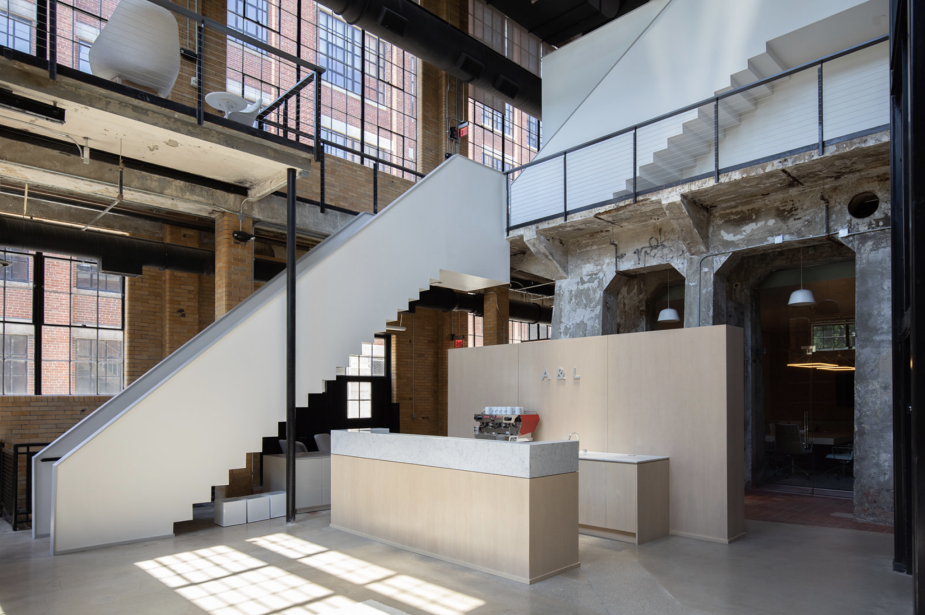
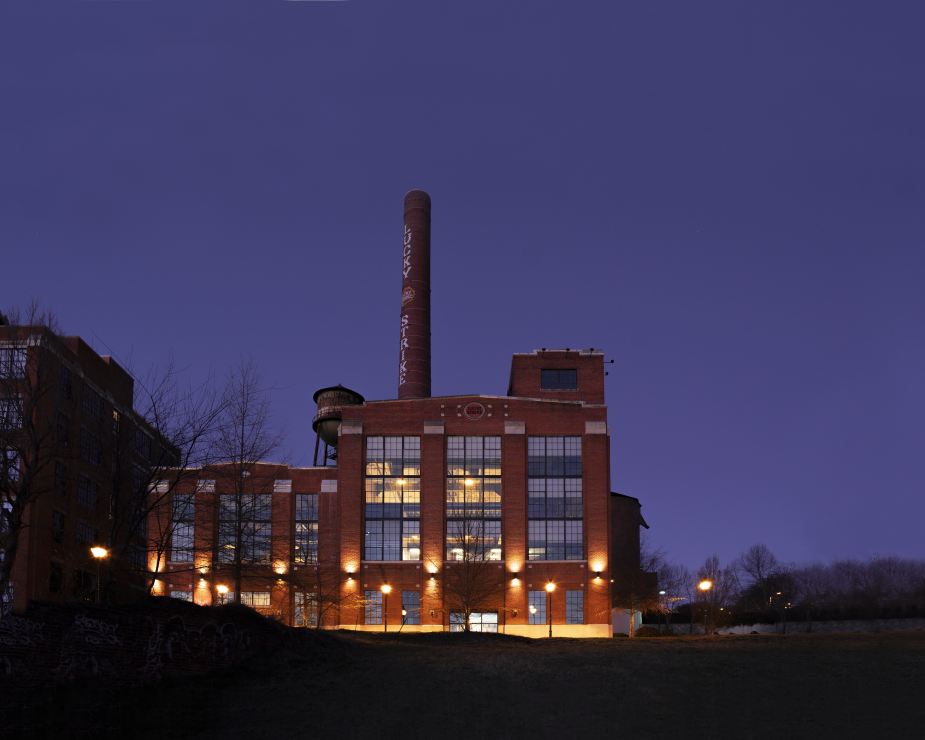
LBB> You're obviously a creative by trade, but now run an entire business, which is growing in size. How do you channel your experience as a creative into the role of business leader / mentor? Do you still spend as much time with the creative department as possible or is it a more overseeing role?
Charles> Because I am a creative that has had to learn how to lead a business, I think I am probably a lot more comfortable with the unknown than many others during times of dynamic change. And because I’ve spent tens of thousands of hours thinking about what else something might be to help solve a business problem, I think my natural impulse is to go there and think about the next thing. While this has suited us well during this dynamic moment, I actually think I have a lot of growing to do when it comes to learning what shouldn’t change. I have spent the last five years learning things that every other business on earth just knows, but they have all been new to me. It’s exciting, but can also be filled with a lot of anxiety. That’s why I feel so fortunate that I have been able to have encountered so many amazing people along the way that know way more about stuff than I do. From an operational standpoint, my favourite feeling is when someone new starts and I can let go of whatever that thing was that I’m terrible at (and the list could fill a book!).
There’s not a single day of mine that is the same. Teams seem to use me most at the beginning of a project to help figure out the foundation and law of physics of how a platform might work and then I usually do a slow-fade as things become more executional. I love that. Clients usually call me when they reach the edge of something new or have a question beyond the day-to-day rhythms. I love that, too. Operationally, I usually get tapped when there’s something that’s an imperative to the business on some front. While this has been the newest area for me to learn, I actually love it because I love learning about new stuff.
LBB> You've worked across some of advertising's most revered brands - Nike, Apple, Google, etc. Is there a piece (or a few pieces) from your career prior to Arts & Letters that feels particularly important or that you are particularly proud of?
Charles> I was very fortunate to grow up at some great places, around great work and even luckier to be mentored by some great people along the way.
Getting to be a writer on ESPN’s ‘This is SportsCenter’ and create a new chapter for something that had long been established taught me a lot about the notion of options. Because the bar was so high (and because there had already been so much), you really had to go far and wide. I remember having reviews where I would bring 70 scripts. 60 wouldn’t make it through the creative director review. Five wouldn’t make it through the clients. Three would get approved for production. One would maybe be good. Options in the process = quality in the output.
That’s been my approach to creating quality ever since. To me, this is where everything begins from a process standpoint, with an extremely wide range of potential things, some that could be interesting, some that will be awful, but there’s something in everything. At the end of the day, all you’re really doing is making something to talk about with someone else, so why not bring a bunch of stuff and have a great conversation?
My time at the Google Creative Lab really made me rethink what I thought the creative process should look like and that a culture of making things and working in interdisciplinary teams could be extremely exciting, even when it was extremely unknown. And I really loved my time at Media Arts Lab and having the chance to lead and learn from an amazing group of people for such a storied brand was truly the opportunity of a lifetime to learn how to lead a larger group.
Almost all of the work I’m most proud of in my career is an execution that comes from some kind of platform (or is the platform itself). Campaigns are a vestige of a ‘ship it and forget it’ mindset, whereas brands today need platforms that allow them to move quicker and adapt and respond in real time across any and all forms of media – paid, owned and earned.
We take the same strategic and conceptual rigour that we’ve always approached everything with, but we’re always looking for that longer-standing thing that can help unlock a brand’s potential and connect with the audience on the other side. When you operate this way, it’s different from the more confectionary and fleeting notion of just falling in love with a single execution. It’s about how it all works together. It’s not a campaign. It’s a brand operating system that can flex at every part of the funnel and activate in culture wherever it can have the most impact.
ESPN - There's No Place Like Sports
Pieces that reflect this line of thinking are things like the brand platform ‘There’s No Place Like Sports’ that we created for ESPN. It’s the best performing brand platform in the history of the company, helped them navigate a world without sports and has become a way for them to move at the pace of sports in the realm of social that they haven’t had before. 'Ready for Football' and 'It’s NBA on ESPN Time' are also examples of things that have driven great results while also yielding great creative work that resonates with the audience. We’re in our third year of many of these which goes to show that when you figure something out at the depth, you really unlock something impactful. The executions then become the place to pivot and for craft to shine. Our recent activation with Victory Goggles for the NBA on ESPN is another example of this agility to show up in the right place at the right time.
A lot of our work for Google has worked the same way with platforms like ‘Make Google Do It’ allowing work like Home Alone Again to break through.
Google - Home Alone Again
Of course, sometimes you just have to make something and see what happens and our recent work with Tito’s Vodka has allowed them to take an elevated POV against the seltzer category with the levity that the brand has always been known for, embraced and captured in a new way that everyone can celebrate in their own unique way.
Tito's in a Can
LBB> How did you wind up in the industry in the first place?
Charles> I started college as a business major and then realised that I really hated (and was horrible at) math. During the summer after my freshman year of college, I did summer school so I could take an intro to accounting for my business major. I also signed up for an elective that was an intro to fiction writing. I quickly realised that I was way more interested in making up stories than I was in accounting (and would never stand a chance as a business major).
I came back, switched my major to English and got involved with the creative writing program. From that moment on, I was trying to figure out how to be a writer. I had always wanted to write for SNL and started talking to people about how to try and do that. I ultimately landed a summer internship with Conan O’Brien and was able to be a fly on the wall in the writers room and see the details of how a show got put together week after week. It was really inspiring and exciting, but I still was kind of unsure of even how to go about any of it at all (and even how to find the right place to start – or what it would even mean if I even did). So I came back for my senior year pretty despondent. Everyone had their plan and was starting to line up jobs and I just remember sitting there and trying to think about a job where I could write in a team setting, but maybe the thing could last a little longer than just night, or maybe even inform other things than just a film, but also have a chance to work on a lot of different stuff.
I’ve had very few cliché lightbulb moments in my life, but this was one of them and I just remember thinking, “SOMEONE WRITES THOSE SPORTSCENTER COMMERCIALS!” And so I went on this journey of trying to figure out how people write commercials. I then started asking who wrote ‘those Geico commercials’ and then found this place called the VCU Adcenter that was in the same town as the place that wrote ‘those Geico commercials’. I applied on the very last day you could apply and barely got in. Then, at the end of VCU, I was actually planning on going and being an English teacher so I could write fiction. Then, I found out towards the very end that Wieden+Kennedy NY was accepting applications for internships, with the potential to work on ESPN. I applied on the last day and also barely got in. I moved to New York and a few months later was helping people write commercials, some of them for 'This Is SportsCenter'.
My lesson from my journey into the industry is that you just have to keep showing up and eventually something will happen.

ESPN - Victory Goggles
LBB> Outside of work, what keeps you happy / sane / busy / relaxed?
Charles> I started A&L out of this realisation that I had built my life around my career and I wanted to see what would happen when I tried to build my career around my life. I think a lot of other people have been trying to answer that question these past few years as well, but it’s not about some hyper clean equation of ‘work time’ and ‘life time’. Work is a part of your life, so it’s all about that balance. They all feed each other.
Outside of work, I have a pretty boring and cliche list of things I do. I run. I listen to a lot of music. I play piano and guitar. I watch a lot of sports with friends and try to see as much live music as I can. I spend most of the time with my daughter and wife. They keep me grounded more than anything else. During the week, I almost always make it home (or out of my home office) for dinner and read to my daughter before bedtime. She usually gets focused on one book for a while. Right now it’s 'The Book With No Pictures' by B.J. Novak. I think I’ve read it over 200 times.













